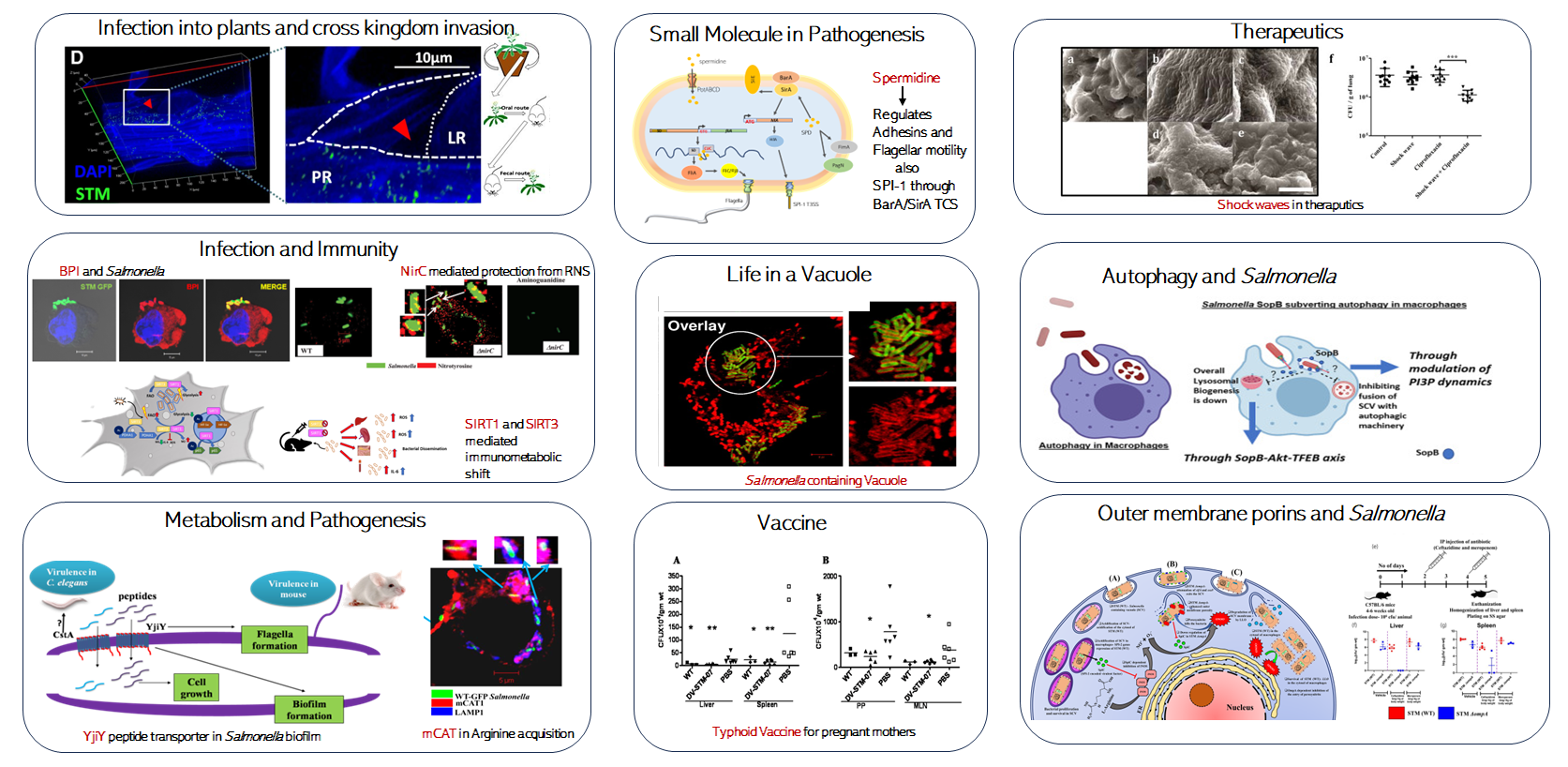Research Theme
Bacteria with its microscopic size can conquer humans, animals, and plants. We exist due to these bacteria, and we can also perish due to these bacteria. The friendly and foe bacteria are the “Ying Yang” of our life. The pathogenic bacteria can harm the host and can live multiple lifestyles. They can be invasive or choose to remain extracellular. Once inside the cell, they have the choice to either live in an enclosed compartment or come out and live free in the cytosol of the host. Though it is very lucrative for the bacteria to come out and enjoy the rich cytosolic environment of the host, it does come with a lot of challenges. So is the case with the vacuolar bacteria, which decides to stay in nutrient-poor enclosed compartments and exerts its pathogenesis. The critical question which interests our lab is to understand how the life of bacteria in a vacuole remains maintained and how it manages to survive and lead to a successful infection.
Research Interest
Our model system is Salmonella, which is an intravacuolar pathogen. Salmonella contributes to the major health burden among other infectious diseases. Furthermore, reports by The Lancet in 2022 shows an increase in antimicrobial resistant strains of Salmonella Typhi in India. The situation is complicated due to its ability to infect a wide array of hosts. Once in the host, the pathogen resides in nutrient-poor enclosed compartment called Salmonella containing vacuole (SCV).
Our lab is interested in understanding the molecular basis of Salmonella pathogenesis, elucidating its dynamic vacuolar life cycle and targeted delivery of drugs to these vacuoles. We use a wide range of hosts spanning cell lines to higher eukaryotes like C. elegans, A. thaliana and mice to understand the host pathogen interactions. We are also interested in exploring the potential of shockwaves as therapeutics and prophylactics in various biological systems.

